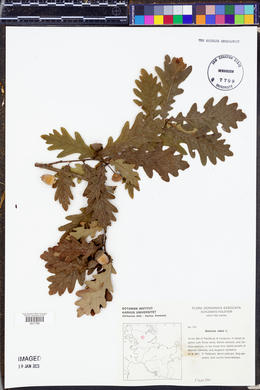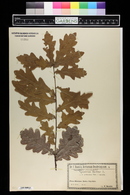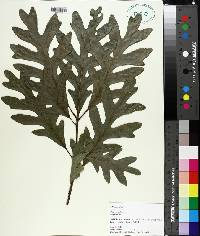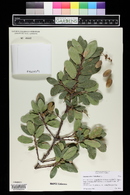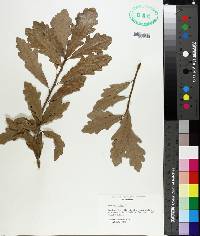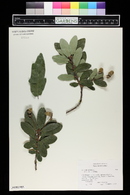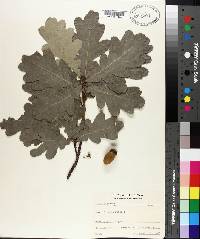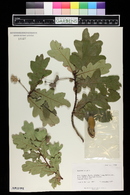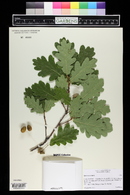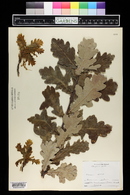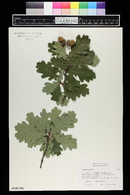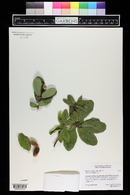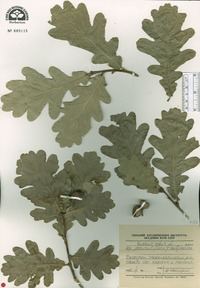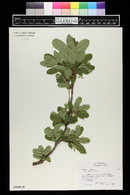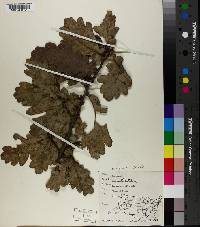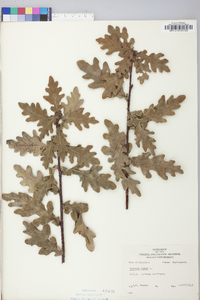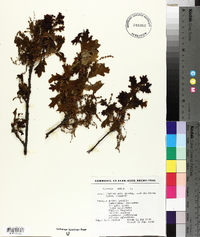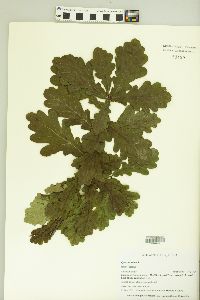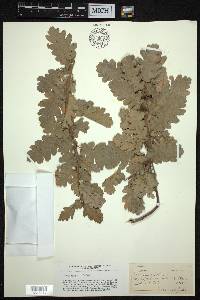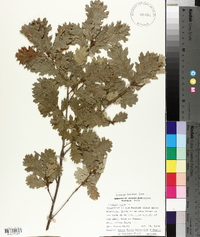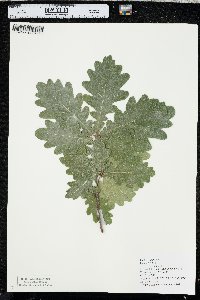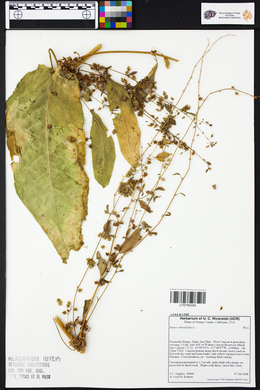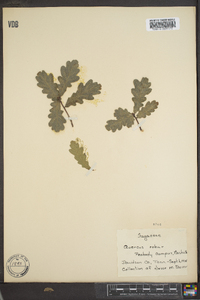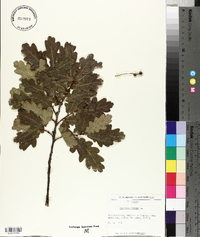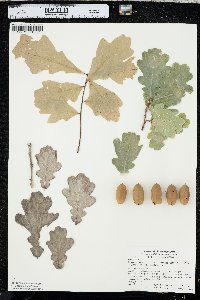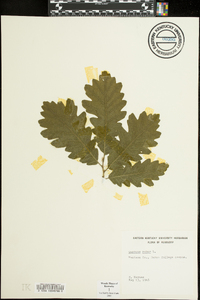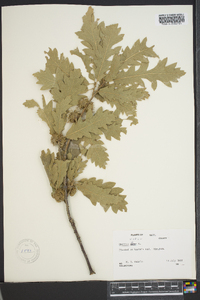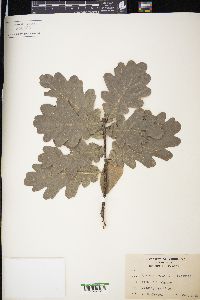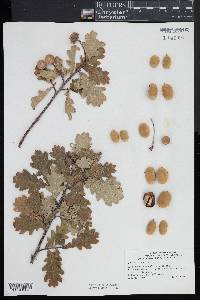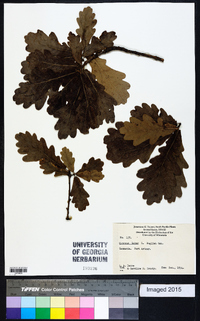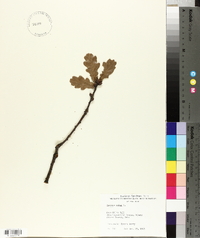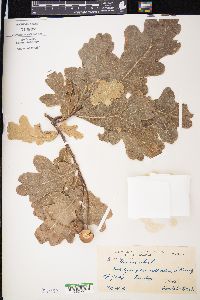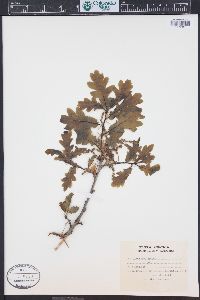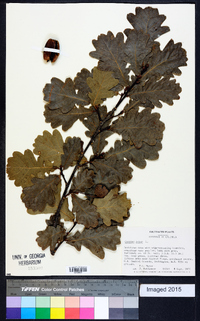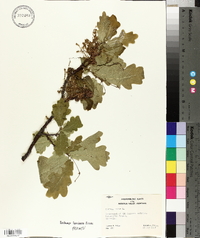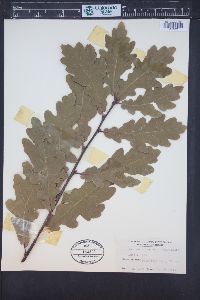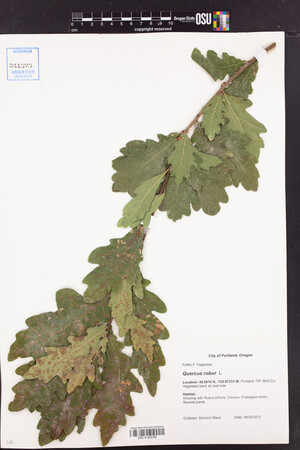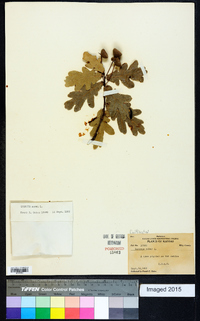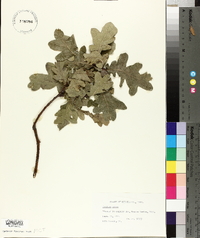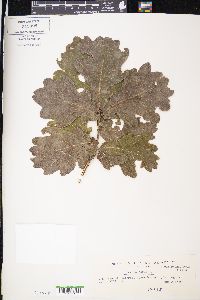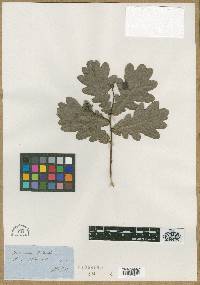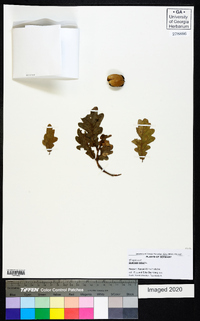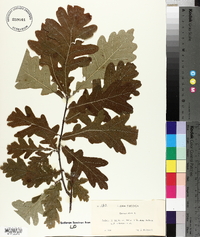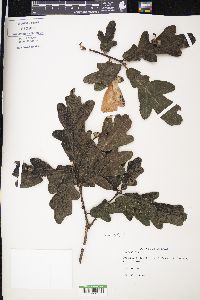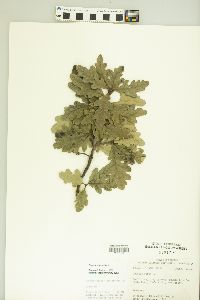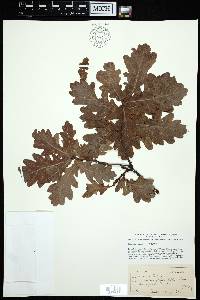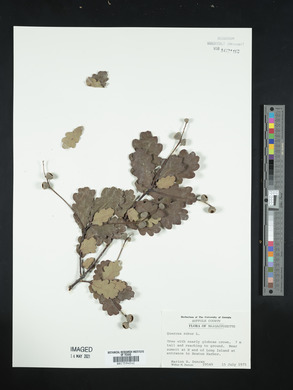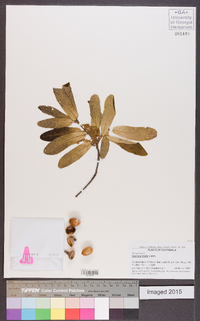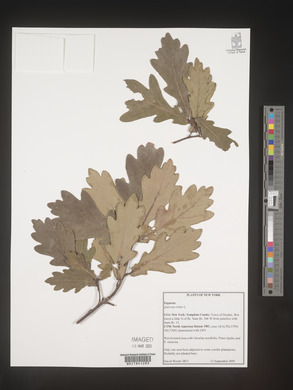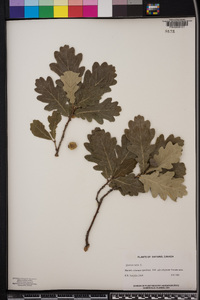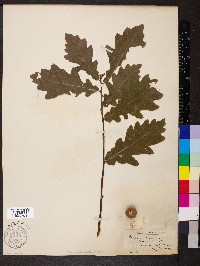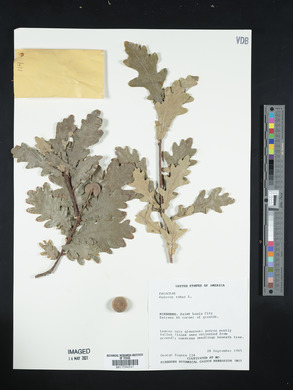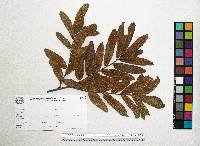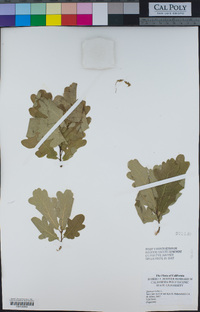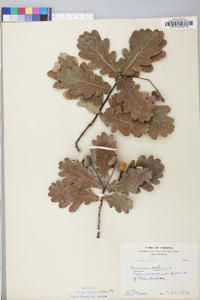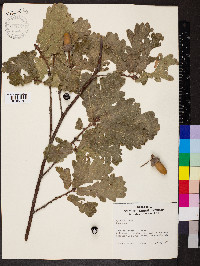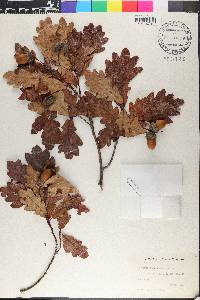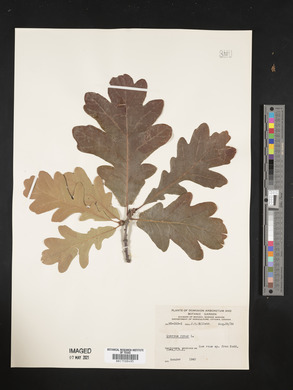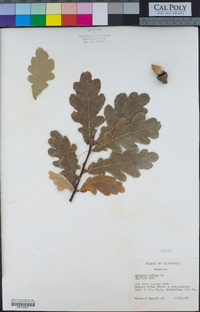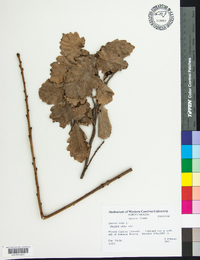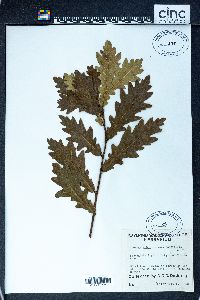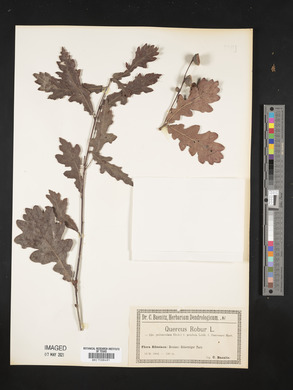Quercus robur
|
|
|
|
Family: Fagaceae
English Oak
[Quercus microcarpa, moreQuercus pedunculata Ehrh., Quercus robur var. fastigiata , Quercus tristis] |
Trees , deciduous, to 30 m. Bark light gray, scaly. Twigs brown, 2-3 mm diam., glabrous. Buds dark brown, ovoid, distally obtuse, 2-3 mm, glabrous. Leaves: petiole 3-6 mm. Leaf blade obovate to narrowly elliptic or narrowly obovate (some cultivars oblanceolate), (50-)70-150(-200) × (20-)35-85(-100) mm, base strongly cordate, often minutely revolute or folded, margins moderately to deeply lobed, lobes rounded or retuse distally, sinuses extending 1/3-7/8 distance to midrib, secondary veins arched, divergent, (3-)5-7 on each side, apex broadly rounded; surfaces abaxially light green, glabrous or sparsely pubescent, glabrous at maturity, adaxially deep green to light green or gray, dull or glossy. Acorns 1-3, on very thin (1-2 mm diam.), flexuous peduncle (25-)35-65(-100) mm; cup hemispheric to deeply goblet-shaped, enclosing 1/4-1/2 nut or more, scales closely appressed, often in concentric rows, finely grayish tomentose; nut brown, ovoid, oblong, or cylindric, 15-30(-35) × 12-20 mm, glabrous. Cotyledons distinct. 2 n = 24. Flowering spring. Roadsides, pastures, forest margins and woodlands; 0-1000 m; introduced from Europe; B.C., N.B., N.S., P.E.I. Quercus robur is one of the oaks most commonly cultivated in temperate and subtropical parts of the world. In North America it is most commonly seen in the eastern and northwestern parts of the United States and and in southeastern and southwestern Canada, where it tolerates a wide array of conditions and is extremely hardy. In Washington, New Brunswick, and Nova Scotia, apparently reproducing populations persist in the wild. Elsewhere, although actual naturalization appears to be rare, Q . robur should be expected to persist around old homesites and other places of cultivation. Quercus robur most closely resembles our native species Q . alba in leaf form. In contrast with Q . alba , which has relatively long petioles (longer than 10 mm), acute leaf bases, and subsessile fruit (rarely on peduncles to 25 mm), Q . robur is easily distinguished by its shorter petioles (less than 10 mm), cordate, almost clasping, leaf bases, and fruit on long (more than 35 mm), thin peduncles. Quercus robur is one of the oaks most widely celebrated in literature; it has wood of exceptionally high quality for the manufacture of furniture, and it previously was the most important wood used in the manufacture of wooden sailing vessels in Europe.
Tree to 45 m tall Leaves: alternate, very short-stalked, dark green above, bluish green beneath, 7.5 - 12.5 cm long, 3.5 - 6 cm wide, widest above the center with three to seven pairs of shallow to deep rounded lobes plus a pair of ear-shaped lobes (auriculate) at the base. Flowers: either male or female, found on the same tree (monoecious), male flowers borne in hanging catkins 2 - 2.5 cm long, female flowers in small clusters near leaf axils. Fruit: an acorn, maturing in one season, with a long and thin stalk. The bowl-shaped cup covers one-quarter to half of the nut and has tightly appressed scales typically arranged in concentric rows and covered with short grayish hairs. Nut 1.5 - 3 cm long and egg-shaped to oblong. Bark: dark gray, becoming deeply furrowed with age. Twigs: reddish brown to purplish, smooth. Buds: dark brown, 2 - 3 mm long, egg-shaped, the scales with fringe of hairs along margin. Each terminal bud is surrounded by a cluster of lateral buds. Form: broad and rounded. Similar species: Many oaks in the white oak group and Quercus robur have highly variable, similar leaves with rounded lobes. Quercus alba often has deeply lobed leaves, light gray bark usually with smooth patches, and an acorn cup covered with warty scales. Quercus bicolor has round-toothed to shallowly lobed leaves that are whitish and hairy beneath, peeling bark on young branches, and a long-stalked acorn cup. Quercus lyrata has leaves that are inversely egg-shaped with irregular, rounded lobes, and an acorn cup that nearly covers the nut. Quercus macrocarpa has deeply lobed leaves that are inversely egg-shaped and hairy beneath, often corky-ridged twigs, and an acorn cup with long fringes along the margin. Flowering: April Habitat and ecology: Occasionally escapes cultivation, typically growing along roadsides or the edges of wooded areas. Occurence in the Chicago region: non-native Notes: The wood of Q. robur was once used to construct English ships and interiors of castles and churches. Etymology: Quercus is the Latin name for oak. Robur is the Latin word for "oak wood," which also means strength. Author: The Morton Arboretum |


